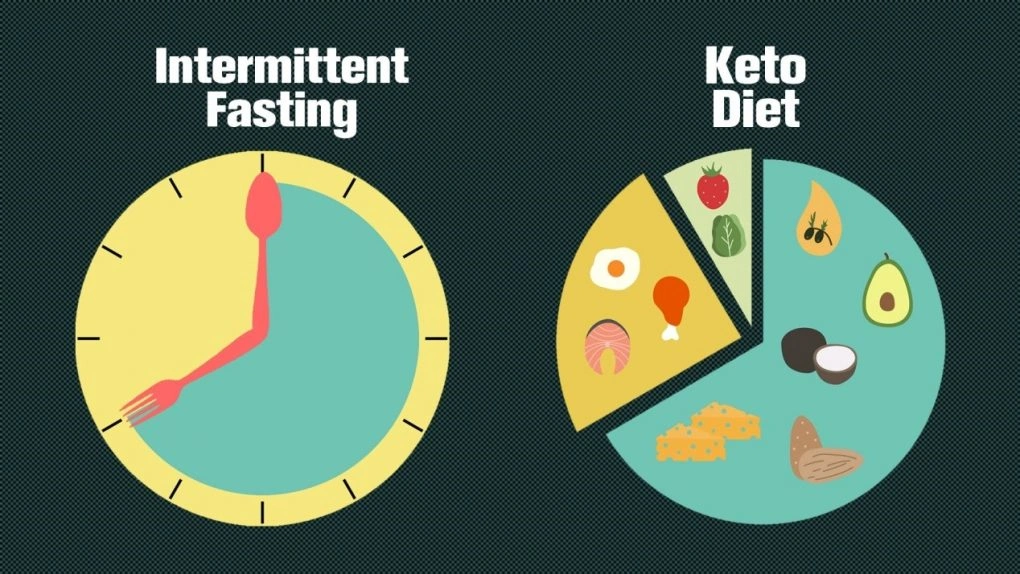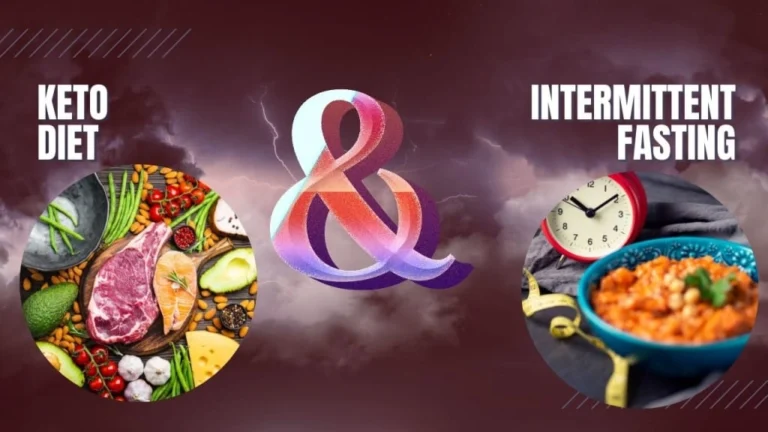In the world of health and nutrition, two popular dietary approaches have gained significant attention: the Ketogenic Diet (Keto) and Intermittent Fasting (IF). Both have been praised for their potential to aid in weight loss, improve metabolic health, and enhance overall well-being. But which one is better for you? Let’s explore the benefits, risks, and differences between these two diet plans to help you make an informed decision.
Understanding the Ketogenic Diet
The Ketogenic Diet is a low-carbohydrate, high-fat diet that shifts your body’s primary energy source from glucose to fats. By drastically reducing carb intake and increasing healthy fats, the body enters a metabolic state called ketosis, where it burns fat for fuel instead of carbohydrates.
Benefits of the Ketogenic Diet

- Weight Loss – Ketosis promotes fat burning, making it an effective strategy for losing weight.
- Improved Energy Levels – Many people report sustained energy throughout the day due to stabilized blood sugar levels.
- Better Brain Function – Ketones provide an efficient energy source for the brain, which may enhance mental clarity and focus.
- Reduced Risk of Type 2 Diabetes – Lower carbohydrate intake helps regulate insulin levels, reducing the risk of insulin resistance.
- Appetite Control – High-fat foods keep you full longer, reducing cravings and unnecessary snacking.
Risks of the Ketogenic Diet
- Keto Flu – Some individuals experience flu-like symptoms when transitioning to ketosis.
- Nutrient Deficiencies – Limiting certain food groups can result in a lack of essential nutrients like fiber and vitamins.
- Digestive Issues – Constipation and digestive discomfort can occur due to low fiber intake.
- Sustainability – Strict carb restrictions can make it difficult to maintain long-term adherence.
Understanding Intermittent Fasting

Intermittent Fasting (IF) is an eating pattern that alternates between periods of fasting and eating. There are several popular IF methods, including the 16:8 method (fasting for 16 hours, eating within an 8-hour window) and the 5:2 method (eating normally for five days and restricting calories for two days).
Benefits of Intermittent Fasting
- Weight Loss – IF helps reduce calorie intake naturally while enhancing fat-burning processes.
- Enhanced Metabolism – Fasting increases levels of human growth hormone (HGH), which promotes fat loss and muscle growth.
- Cellular Repair and Longevity – Fasting triggers autophagy, a process that removes damaged cells and regenerates new ones, potentially slowing aging.
- Improved Insulin Sensitivity – IF can help regulate blood sugar levels, reducing the risk of diabetes.
- Flexibility – Unlike Keto, IF does not restrict food choices, making it easier to follow long-term.
Risks of Intermittent Fasting
- Hunger and Irritability – Fasting periods may lead to hunger pangs and mood swings, especially for beginners.
- Potential Muscle Loss – Prolonged fasting without adequate protein intake may lead to muscle loss.
- Energy Fluctuations – Some individuals experience fatigue or low energy, particularly in the early stages.
- Not Suitable for Everyone – IF may not be ideal for those with certain medical conditions, such as low blood sugar issues or eating disorders.
Keto vs. Intermittent Fasting: Which One Should You Choose?

Both the Ketogenic Diet and Intermittent Fasting offer compelling health benefits, but choosing the right one depends on your lifestyle, goals, and individual preferences.
- For rapid fat loss – The Ketogenic Diet may be more effective in burning stored fat quickly due to ketosis.
- For long-term sustainability – Intermittent Fasting offers flexibility and can be easier to maintain without strict dietary restrictions.
- For better metabolic health – Both diets improve insulin sensitivity, but IF may have the added advantage of promoting cellular repair and longevity.
- For mental clarity – Keto provides a steady energy supply to the brain through ketones, reducing brain fog.
Can You Combine Keto and Intermittent Fasting?
Yes! In fact, many people choose to combine Keto and IF for maximum benefits. Fasting can help accelerate ketosis, making fat burning more efficient. A common approach is following the 16:8 intermittent fasting schedule while maintaining a low-carb, high-fat ketogenic diet. This combination can amplify weight loss, improve energy levels, and enhance overall metabolic health.
Final Thoughts
Both the Ketogenic Diet and Intermittent Fasting offer unique health benefits and potential drawbacks. The best approach depends on your personal health goals, lifestyle, and how your body responds to each method. Whether you choose Keto, IF, or a combination of both, consistency and balance are key to long-term success. Always consult a healthcare professional before making significant dietary changes to ensure the best outcome for your health.


